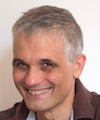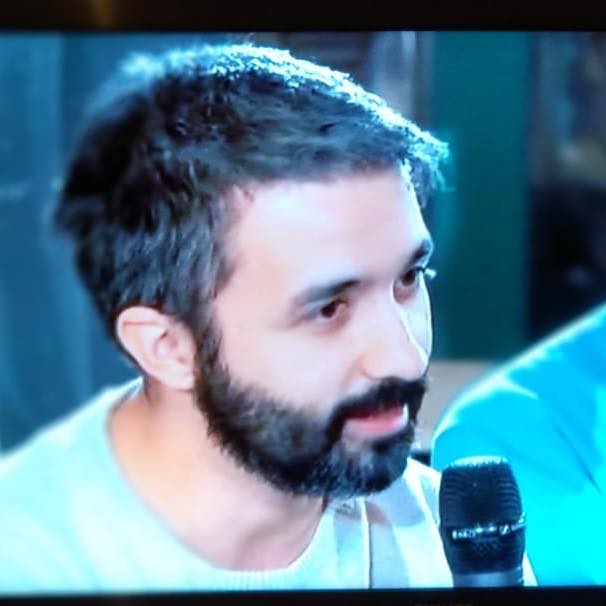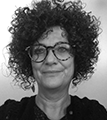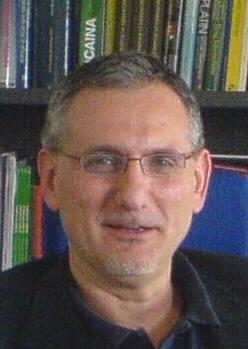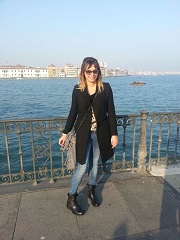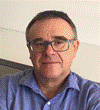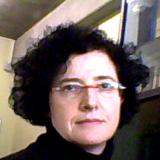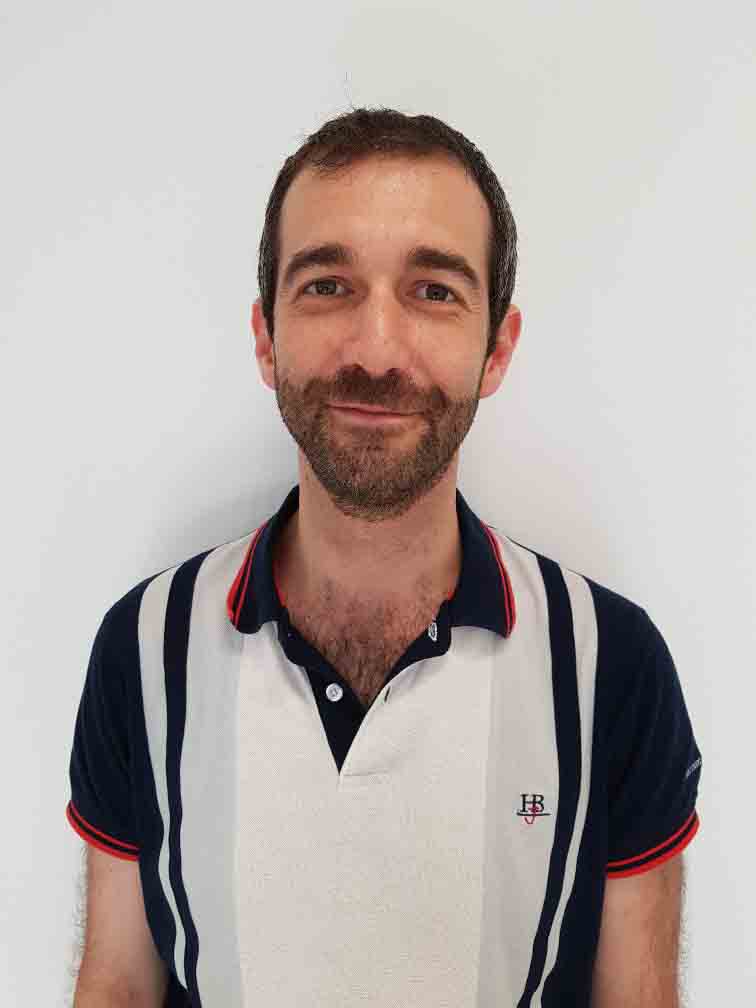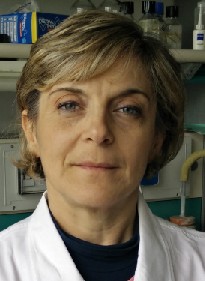Studying at the University of Verona
Here you can find information on the organisational aspects of the Programme, lecture timetables, learning activities and useful contact details for your time at the University, from enrolment to graduation.
Academic calendar
The academic calendar shows the deadlines and scheduled events that are relevant to students, teaching and technical-administrative staff of the University. Public holidays and University closures are also indicated. The academic year normally begins on 1 October each year and ends on 30 September of the following year.
Course calendar
The Academic Calendar sets out the degree programme lecture and exam timetables, as well as the relevant university closure dates..
| Period | From | To |
|---|---|---|
| INF TN - 2° anno 1° sem | Oct 1, 2019 | Dec 12, 2019 |
| INF TN - 1° anno 1° sem | Oct 9, 2019 | Dec 20, 2019 |
| INF TN - 3° anno 1° sem | Oct 14, 2019 | Dec 20, 2019 |
| INF TN - 3° anno 2° sem | Feb 3, 2020 | Mar 27, 2020 |
| INF TN - 1° anno 2° sem | Feb 3, 2020 | Apr 1, 2020 |
| INF TN - 2° anno 2° sem | May 4, 2020 | Jul 2, 2020 |
| Session | From | To |
|---|---|---|
| INF TN - sessione invernale (2° anno) | Dec 18, 2019 | Jan 20, 2020 |
| INF TN - sessione invernale (1°-3° anno) | Jan 9, 2020 | Jan 31, 2020 |
| INF TN - sessione estiva (3° anno 1^ parte | Apr 3, 2020 | Apr 20, 2020 |
| INF TN - sessione estiva (1° anno 1^parte) | Apr 8, 2020 | Apr 24, 2020 |
| INF TN - sessione estiva (2° anno 1^ parte | Apr 17, 2020 | Apr 29, 2020 |
| INF TN - sessione estiva (1° anno 2^ parte | Jul 9, 2020 | Jul 31, 2020 |
| INF TN - sessione estiva (1° anno 2^ parte | Jul 17, 2020 | Jul 31, 2020 |
| INF TN - sessione estiva (3° anno 2^ parte) | Jul 17, 2020 | Jul 31, 2020 |
| INF TN - sessione autunnale (1° anno) | Sep 4, 2020 | Sep 30, 2020 |
| INF TN - sessione autunnale (2°-3° anno) | Sep 7, 2020 | Sep 30, 2020 |
| Session | From | To |
|---|---|---|
| 1^ SESSIONE | Oct 1, 2020 | Nov 30, 2020 |
| 2^ SESSIONE | Mar 1, 2021 | Apr 30, 2021 |
| Period | From | To |
|---|---|---|
| FESTIVITA' OGNISSANTI | Nov 1, 2019 | Nov 1, 2019 |
| FESTIVITA' IMMACOLATA CONCEZIONE | Dec 8, 2019 | Dec 8, 2019 |
| Vacanze di Natale | Dec 24, 2019 | Jan 6, 2020 |
| VACANZE DI PASQUA | Apr 10, 2020 | Apr 15, 2020 |
| FESTA DELLA LIBERAZIONE | Apr 25, 2020 | Apr 25, 2020 |
| FESTIVITA' DEL SANTO PATRONO SAN ZENO | May 21, 2020 | May 21, 2020 |
| FESTA DELLA REPUBBLICA | Jun 2, 2020 | Jun 2, 2020 |
| Description | Period | From | To |
|---|---|---|---|
| INF TN - tirocinio 2° anno 1^ esp | INF TN - tirocinio 2° anno 1^ esp | Jan 21, 2020 | Feb 28, 2020 |
| INF TN - tirocinio 2° anno 2^ esp | INF TN - tirocinio 2° anno 2^ esp | Mar 5, 2020 | Apr 8, 2020 |
| INF TN - tirocinio 3° anno 1^ esp | INF TN - tirocinio 3° anno 1^ esp | Apr 21, 2020 | May 29, 2020 |
| INF TN - tirocinio 1° anno 1^ esp | INF TN - tirocinio 1° anno 1^ esp | Apr 27, 2020 | May 29, 2020 |
| INF TN - tirocinio 1° anno 2^ esp | INF TN - tirocinio 1° anno 2^ esp | Jun 8, 2020 | Jul 14, 2020 |
| INF TN - tirocinio 3° anno 2^ esp | INF TN - tirocinio 3° anno 2^ esp | Jun 8, 2020 | Jul 14, 2020 |
| INF TN - tirocinio 2° anno 3^ esp | INF TN - tirocinio 2° anno 3^ esp | Sep 2, 2020 | Oct 9, 2020 |
| INF TN - tirocinio 3° anno 3^ esp | INF TN - tirocinio 3° anno 3^ esp | Sep 2, 2020 | Oct 16, 2020 |
Exam calendar
Exam dates and rounds are managed by the relevant Medicine Teaching and Student Services Unit.
To view all the exam sessions available, please use the Exam dashboard on ESSE3.
If you forgot your login details or have problems logging in, please contact the relevant IT HelpDesk, or check the login details recovery web page.
Should you have any doubts or questions, please check the Enrollment FAQs
Academic staff
 mariangelabassetti@gmail.com
mariangelabassetti@gmail.com
 anita.bevilacqua@apss.tn.it
anita.bevilacqua@apss.tn.it
 borghesi.a@mail.apss.tn.it
borghesi.a@mail.apss.tn.it
 elena.bravi@apss.tn.it
elena.bravi@apss.tn.it
 cembrani@apss.tn.it
cembrani@apss.tn.it
 dellai@tn.apss.tn.it
dellai@tn.apss.tn.it
 alessandra.magotti@tin.it
alessandra.magotti@tin.it
 loredana.pancheri@univr.it
loredana.pancheri@univr.it
 marina.pecoraro@apss.tn.it
marina.pecoraro@apss.tn.it
 cinzia.vivori@apss.tn.it
cinzia.vivori@apss.tn.it
Zadra Tania
Study Plan
The Study Plan includes all modules, teaching and learning activities that each student will need to undertake during their time at the University.
Please select your Study Plan based on your enrollment year.
1° Year
| Modules | Credits | TAF | SSD |
|---|
Professional Laboratories (1st year)
2° Year activated in the A.Y. 2020/2021
| Modules | Credits | TAF | SSD |
|---|
Professional Laboratories (2nd year)
3° Year activated in the A.Y. 2021/2022
| Modules | Credits | TAF | SSD |
|---|
Professional Laboratories (3rd year)
| Modules | Credits | TAF | SSD |
|---|
Professional Laboratories (1st year)
| Modules | Credits | TAF | SSD |
|---|
Professional Laboratories (2nd year)
| Modules | Credits | TAF | SSD |
|---|
Professional Laboratories (3rd year)
Legend | Type of training activity (TTA)
TAF (Type of Educational Activity) All courses and activities are classified into different types of educational activities, indicated by a letter.
Morphological and functional fundamentals of life (2019/2020)
The teaching is organized as follows:
Learning outcomes
The course introduces the student to the ability of describing the human’s body structure (both considering the macroscopic level and the microscopic level) in normal conditions. Moreover the course develop the knowing of the essential morphologic characteristics of systems, organs, tissues, cells and subcellular structures of the human body and their main related Morphofunctional. It also proposes the study of the physiological phenomena of the various systems, in a holistic view from the cell to the whole organism and to recognize the principles of homeostasis and the control mechanisms that oversee them and the major adjustments in non- basal conditions. HISTOLOGY: The objectives of the course are: • to provide to the students essential knowledge on the structure and function of the cell as well as of tissues which compose the organs of the human body • familiarize the students with themes concerning cells and tissues as basis for subsequent courses of the normal and pathological structure and functions of the human body HUMAN ANATOMY: The course is aimed at learning by the student of architecture and anatomical morphology of organs and systems and of the functional significance of their overall organization in the human body. PHYSIOLOGY: The course provides the scientific knowledge of the human body's general structure. The student learns the working principles of the different organs, the dynamic integration of organs in apparatuses and the general mechanisms of the functional control in normal conditions.
Program
------------------------
MM: FISIOLOGIA
------------------------
1. Cell physiology 1.1. Composition and biophysical characteristics of the cell membrane. 1.2. Passive and active transport. Osmosis. 2. The physiology of excitable and contractile tissues 2.1. Resting potential and action potential. Absolute and relative refractory periods. Propagation of the action potential. Graded potentials. 2.2. Classification of nerve fibers. 2.3. Chemical Synapses. Post-synaptic excitatory and inhibitory potentials. Spatial and temporal integration of postsynaptic potentials. 2.4. Electro-mechanical coupling in skeletal muscle. The cardiac action potential. Smooth muscle. 2.5. Contractile proteins. 3. Central and peripheral nervous system 3.1. Functional organization of the central nervous system. 3.2. Spinal reflexes. 3.3. Functions of the autonomic nervous system. 3.4. Brainstem and hypothalamus. 3.5. Voluntary movement. 3.6. Cerebellum and basal ganglia. 3.7. Sleep and wake. 3.8. Language. 3.9. Somatic sensitivity and pain. 4. Cardiovascular system 4.1. Generation and conduction of excitement. Cardiac pacemaker. Baroreceptors. 4.2. Intrinsic and extrinsic regulation of cardiac function: Frank-Starling mechanism: preload, afterload and contractility. Heart rate, stroke volume and cardiac output. 4.2. Basic elements of hydrostatics and hydrodynamics: pressure, flow, strength and viscosity. Poiseuille’s Law. Laminar and turbulent flow. Laplace’s law. 4.3. Arteries, capillaries and veins. Transcapillary exchanges. Venous circulation. Central and peripheral arterial pulse; Origin and propagation of the pulse wave. 4.4. Blood pressure regulation. Short-term and long-term blood pressure regulation: baroreceptors, kidney-fluid system, renin-angiotensin-aldosterone system. 4.5. Venous return and factors that influence it. Pulmonary hemodynamics. 5. Respiratory system 5.1. Respiratory Mechanics. Intrathoracic and intra-pulmonary pressure and their variations during breathing. 5.2. Pulmonary volumes and capacities: definitions and measurements. 5.3. Physics laws of gasses. Inhaled, exhaled and alveolar air and partial gas pressures. Anatomical and physiological dead space. Pulmonary and alveolar ventilation. Dissension of gases between the lungs and the blood. Oxygen transport. 5.4. Oxygen saturation curve of hemoglobin. Influence of pCO2, pH and temperature. Quantitative aspects of oxygen transport in the blood. Carbon dioxide transport. 5.5. Nervous and chemical respiratory control: brainstem respiratory centers, peripheral and central chemoreceptors. 6. Renal system 6.1. The nephron unit: glomerulus and tubule. 6.2. Renal circulation. 6.3. Filtration process. Composition of the ultrafiltrate. Reabsorption and secretion mechanisms. Renal clearance. Tubular glucose reabsorption. Sodium reabsorption. Water reabsorption. 6.4. Concentration and dilution of urine. Hormonal control of renal function: ADH, aldosterone, renin 6.5. Renal role in Acid-Base Equilibrium. 6.6. Micturition. 6.7. Integrated control mechanisms of the volume and the osmolality of extracellular fluid. 7. Digestive system 7.1. Saliva secretion. Chewing and swallowing. 7.2. Gastric filling and emptying. Gastric secretion: gastric mucosa glands; Composition and functions of gastric juice. Nervous and humoral control of motility and gastric secretion. The vomit reflex. 7.3. Pancreatic exocrine secretion and bile secretion. Nervous and humoral control of pancreatic secretion. Composition, nervous and humoral control of biliary secretion. 7.4. Nervous and hormonal control of intestinal movements and secretion. 7.5. Defecation. 7.6. Intestinal absorption of carbohydrates, proteins, lipids, vitamins, water and electrolytess. 7.7. Short-term and long-term nervous control of appetite. 8. Endocrine System 8.1. The hypothalamus-pituitary-gland endocrine glands. 8.2. Stress hormones: cortisol and catecholamines 8.3. Lactation hormones: prolactin and oxytocin 8.4. Sex hormones 8.5. Hormones in the short and long term metabolic control: insulin, glucagon, thyroid hormones and GH. 8.6. Homeostasis of body calcium: parathormone, calcitonin and vitamin D.
------------------------
MM: ANATOMIA UMANA
------------------------
- Locomotor apparatus - Cardiocirculatory apparatus - Lung apparatus - Renal tract - Gastrointestinal tract - pancreas and liver - Nervous system
------------------------
MM: ISTOLOGIA
------------------------
- Histological methods - Cell membrane, cytosol, organelles, nucleus - Lining and glandular epithelium - Mesenchymal tissues - Connective tissue - Cartilage - Bone - Skeletal, cardiac, and smooth muscle - Nervous tissue
Bibliography
| Author | Title | Publishing house | Year | ISBN | Notes |
|---|---|---|---|---|---|
| Martini et al. | Fondamenti di Anatomia e Fisiologia (Edizione 4) | Edises | 2019 | 978-88-3319-053-2 | |
| Kenneth S. Saladin | Anatomia & fisiologia (Edizione 2) | PICCIN | 2019 | 8829929557 | |
| Widmaier E.P., Raff H., Strang K.T. | Vander Fisiologia (Edizione 2) | Ambrosiana | 2018 | 9788808280022 | |
| Bentivoglio M. et al. | Anatomia umana e istologia (Edizione 2) | Minerva Medica | 2010 | 978-88-7711-670-3 | |
| Bani et al. | Istologia per le lauree triennali e magistrali | Sorbona | 2018 | 9788879476782 |
Examination Methods
The exam is written. It is carried out together for the three modules (anatomy, histology, physiology). The test consists of 100 multiple choice questions (5 possible answers each; correct answer, 1 point, wrong/missing answer, 0 points). Sufficiency is evaluated on the total of the correct answers. The place of examination is the University Polo in Trento.
Career prospects
Module/Programme news
News for students
There you will find information, resources and services useful during your time at the University (Student’s exam record, your study plan on ESSE3, Distance Learning courses, university email account, office forms, administrative procedures, etc.). You can log into MyUnivr with your GIA login details: only in this way will you be able to receive notification of all the notices from your teachers and your secretariat via email and soon also via the Univr app.
Gestione carriere
Orario lezioni
Documents
| Title | Info File |
|---|---|
|
|
pdf, it, 437 KB, 07/03/24 |
|
|
pdf, it, 457 KB, 16/04/24 |
|
|
pdf, it, 450 KB, 05/04/24 |
|
|
pdf, it, 628 KB, 08/01/24 |
|
|
pdf, it, 1453 KB, 07/02/24 |
Guida ai programmi degli insegnamenti
Guida ai programmi degli insegnamenti
Documents
| Title | Info File |
|---|---|
|
|
pdf, it, 1594 KB, 12/12/22 |
|
|
pdf, it, 1310 KB, 02/09/21 |
Graduation
Documents
| Title | Info File |
|---|---|
|
|
pdf, it, 242 KB, 19/01/24 |
|
|
pdf, it, 80 KB, 06/04/24 |
|
|
pdf, it, 43 KB, 06/04/24 |
|
|
pdf, it, 44 KB, 09/04/24 |
|
|
pdf, it, 148 KB, 06/04/24 |
|
|
pdf, it, 108 KB, 06/04/24 |
|
|
pdf, it, 115 KB, 06/04/24 |
|
|
pdf, it, 1487 KB, 18/02/22 |
|
|
pdf, it, 437 KB, 22/03/24 |
|
|
pdf, it, 957 KB, 22/03/24 |
|
|
pdf, it, 424 KB, 19/01/24 |
Linee guida per riconoscimento cfu
Lo studente che intende chiedere il riconoscimento di moduli o insegnamenti pregressi dovrà presentare domanda, entro il 30 novembre dell’anno accademico in corso, seguendo le indicazioni indicate al link seguente: https://www.univr.it/it/i-nostri-servizi/segreterie-studenti/gestione-carriere-studenti-medicina-e-chirurgia/riconoscimento-crediti-acquisiti-da-una-carriera-pregressa-medicina
Documents
| Title | Info File |
|---|---|
|
|
pdf, it, 295 KB, 09/11/21 |
Student login and resources
Attività didattiche regime part-time
Modalità di richiesta
La domanda di iscrizione part-time può essere presentata all'inizio di ogni anno accademico e comunque entro il 30 novembre di ogni anno. Entro lo stesso termine, se necessario, lo studente potrà richiedere di tornare al regime full-time. Al link seguente la pagina del servizio https://www.univr.it/it/i-nostri-servizi/segreterie-studenti/flessibilita-nella-frequenza-dei-corsi/possibilita-di-iscrizione-part-time-e-ripristino-full-time
Una volta inviata la domanda, lo studente concorda in via preventiva con il Coordinatore della didattica professionale (CDP), il piano di studi che intende perseguire nel periodo di part-time compilando il modulo in allegato
Documents
| Title | Info File |
|---|---|
|
|
octet-stream, it, 1309 KB, 21/10/22 |
Appelli d'esame
Appelli d'esame
Documents
| Title | Info File |
|---|---|
|
|
pdf, it, 35 KB, 09/04/24 |
|
|
pdf, it, 2762 KB, 15/12/22 |
Tirocinio Professionalizzante
Tirocinio Professionalizzante
Attività Seminariali e a scelta dello studente
Attività Seminariali e a scelta dello studente
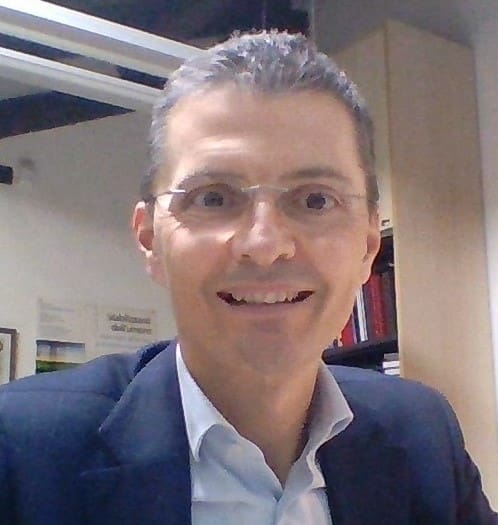
 +39 0458126418
+39 0458126418
